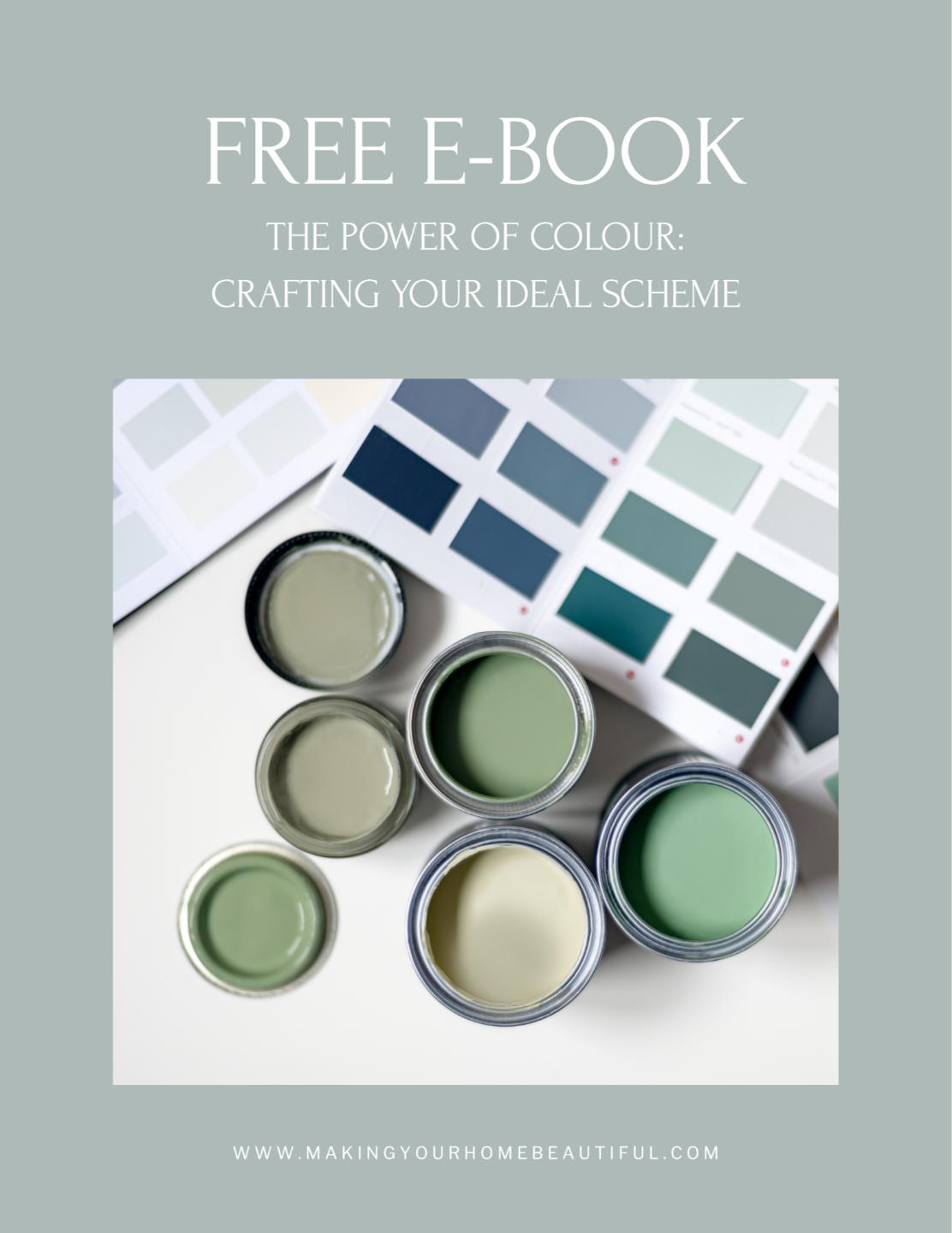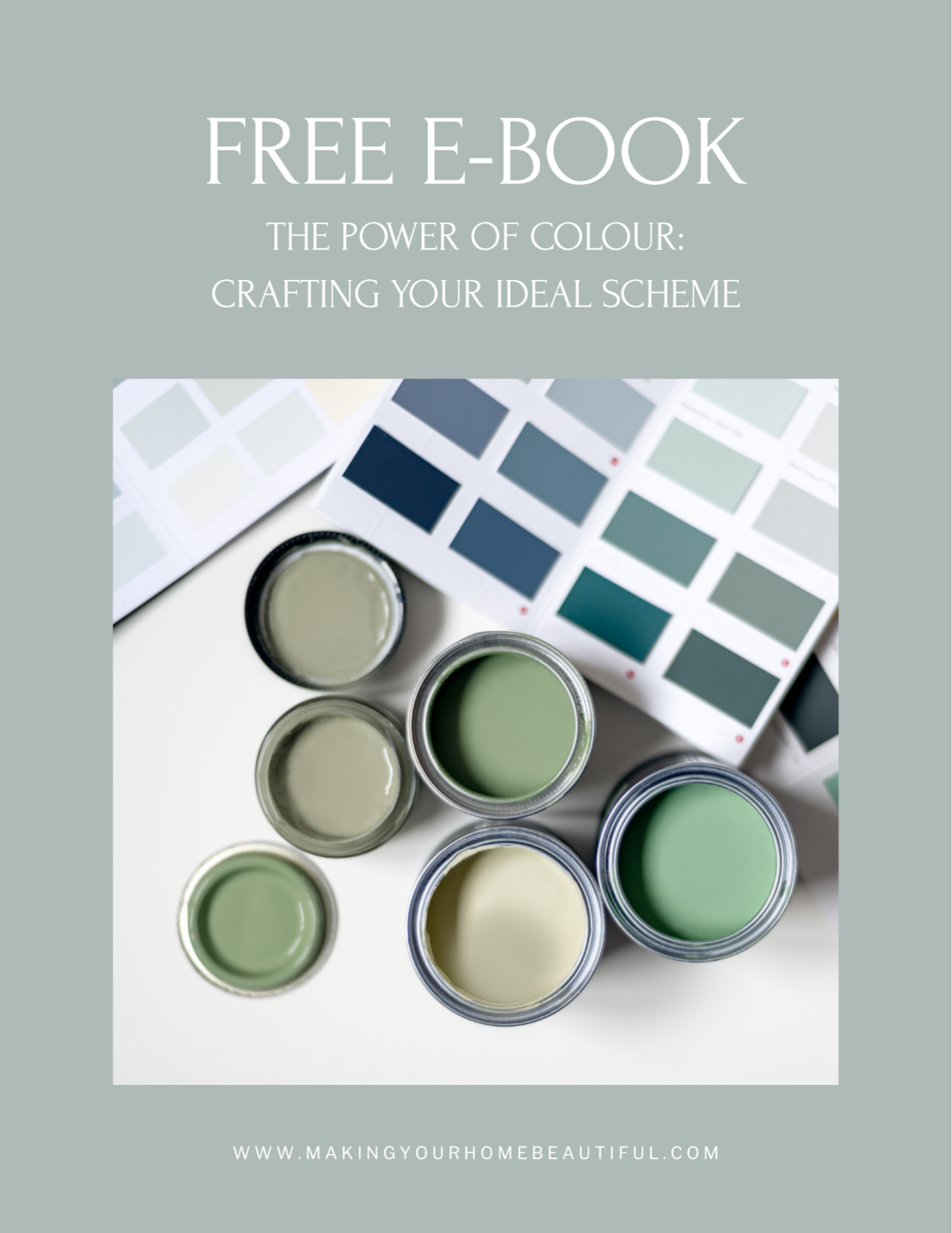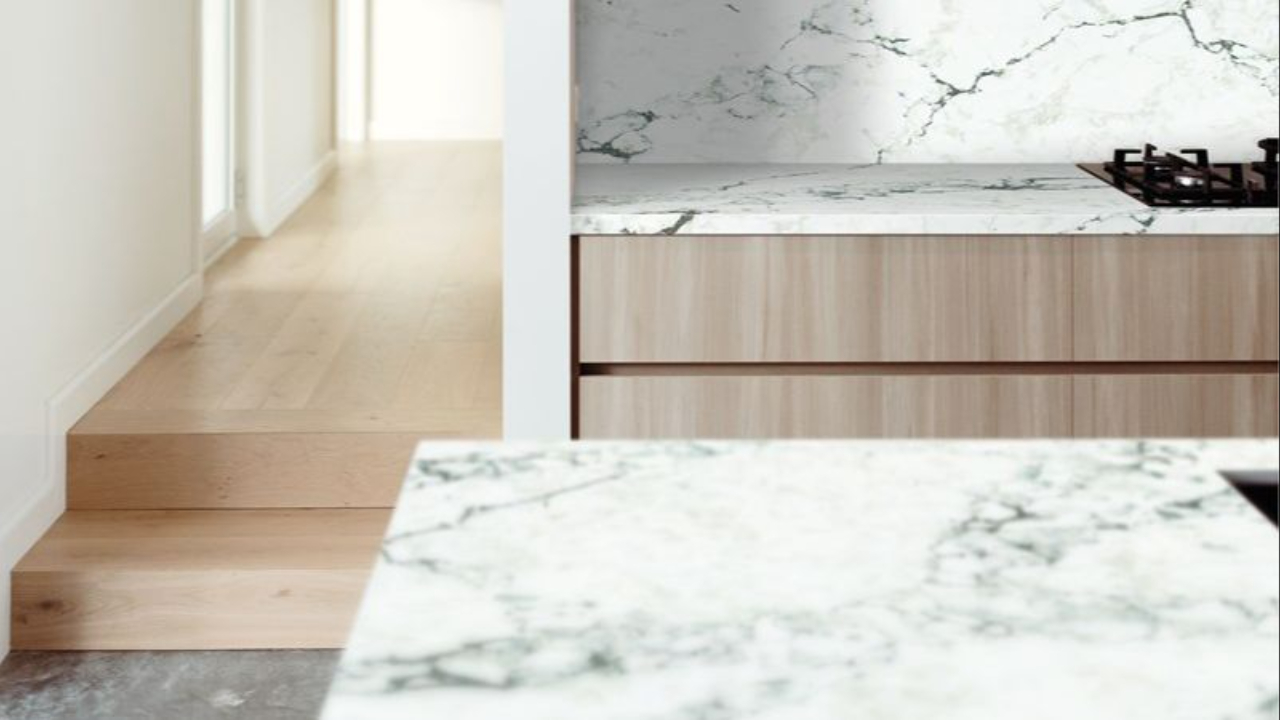
Your kitchen benchtop can often be the single most expensive item for a kitchen renovation and it is therefore really important that you get this choice right, both in terms of practicality for you and your family and in terms of colour and design for the look that you want to achieve. A fact for many of us too is that budget constraints will also play a role, but there is a lot of choice – sometimes too much – so don’t despair there will be a solution that is right for you.
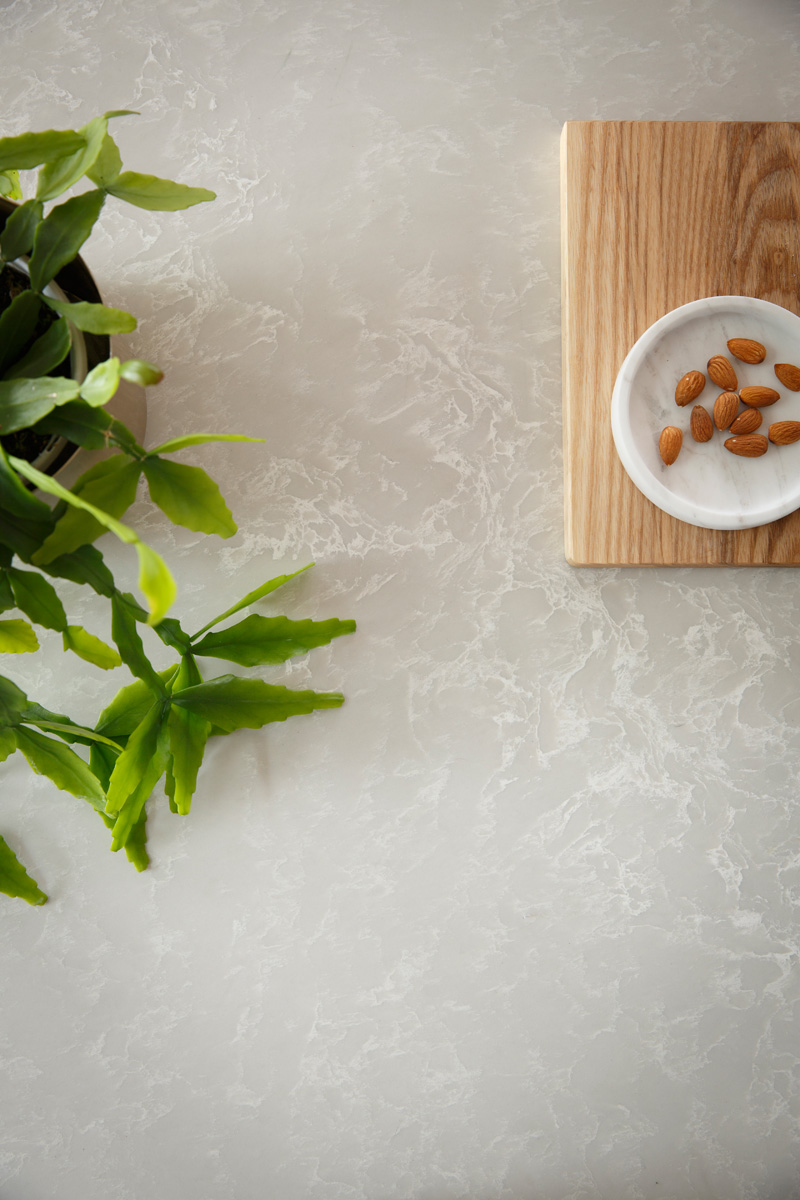
The Natural choice for a kitchen benchtop
Natural stone is beautiful and can really make a statement. A granite benchtop is extremely durable and in a simple black is a great choice for a long lasting, classic style look. Lovers of warm neutral brown schemes will also find that there are granites available that will suit this palette and again this is a very classic and homely kitchen look.

Popular at the moment of course is marble, which looks really stunning. You do have to really love it though as it can make quite a bold statement and you need to remember that although you love this now, 10 years on it may not give the classic look that you had hoped for. Don’t let me put you off – I absolutely love the style – but you must too as it is a big investment. Of course there are many different types of marble and you can choose one that has less dominant veins throughout if you want a more understated look.

Think carefully about your colour scheme as marble comes in lots of variations, not just the classic white and black and the veins running through the piece will vary greatly too and will include whites, varying tones of grey and lovely rich browns.
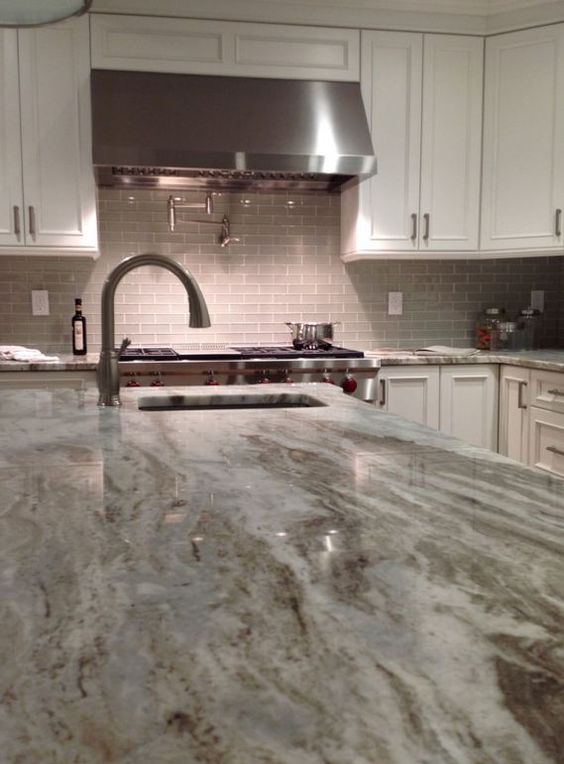
A great selling point for marble is that it is beautifully cool to the touch so if you are a cook, and in particular love to bake, then a marble bench top is great to work with.

There are two really important points to remember when selecting a natural stone:
Firstly, you must look at the slab or slabs that will be used in your scheme. As this is a natural product it will vary greatly and a piece that you fell in love with from a small sample may bear no relation to the end product installed in your kitchen. This can entail a bit of legwork, but it is worth it, or you can engage a designer to do this for you.
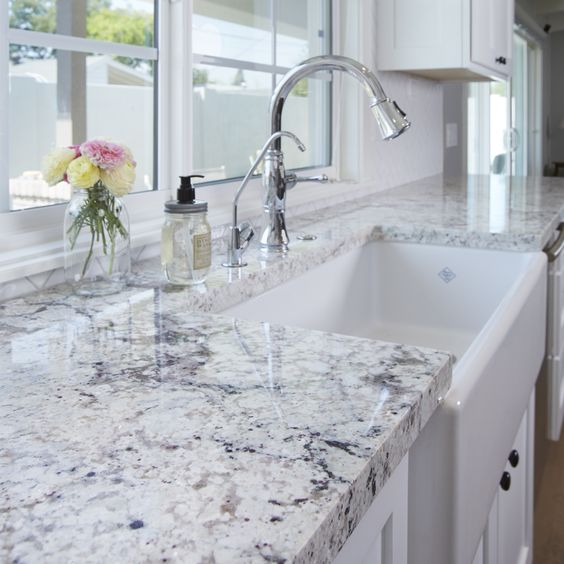
Secondly, natural stone will stain so you need to appreciate that this type of benchtop will need more maintenance as you will need to ensure that you wipe up spills immediately, particularly from foods that are acidic like tomatoes, citrus and vinegar.
This is therefore not a great option for a rental property or holiday home that is shared throughout the family. I don’t want this to put you off though as it just takes a little more care. A honed finish does provide a little more protection as it is less porous, but it is still a natural product that will mark. Natural stone can also be sealed to offer more protection.
Some people do not let this worry them though. Beautiful slabs of marble are passed throughout families in Italy and transported from home to home. It really depends on how much of a perfectionist you are and whether small marks will bug you or remind you of a great party or family gathering!
Kitchen benchtops of engineered stone
The market will always respond to these challenges and reconstituted quartz stone is a great alternative to natural stone. These stones have a high density and are non-porous and resistant to cracks and chips. This is not to say that they are completely impervious – nothing is – but they do withstand a fair amount of wear and tear.
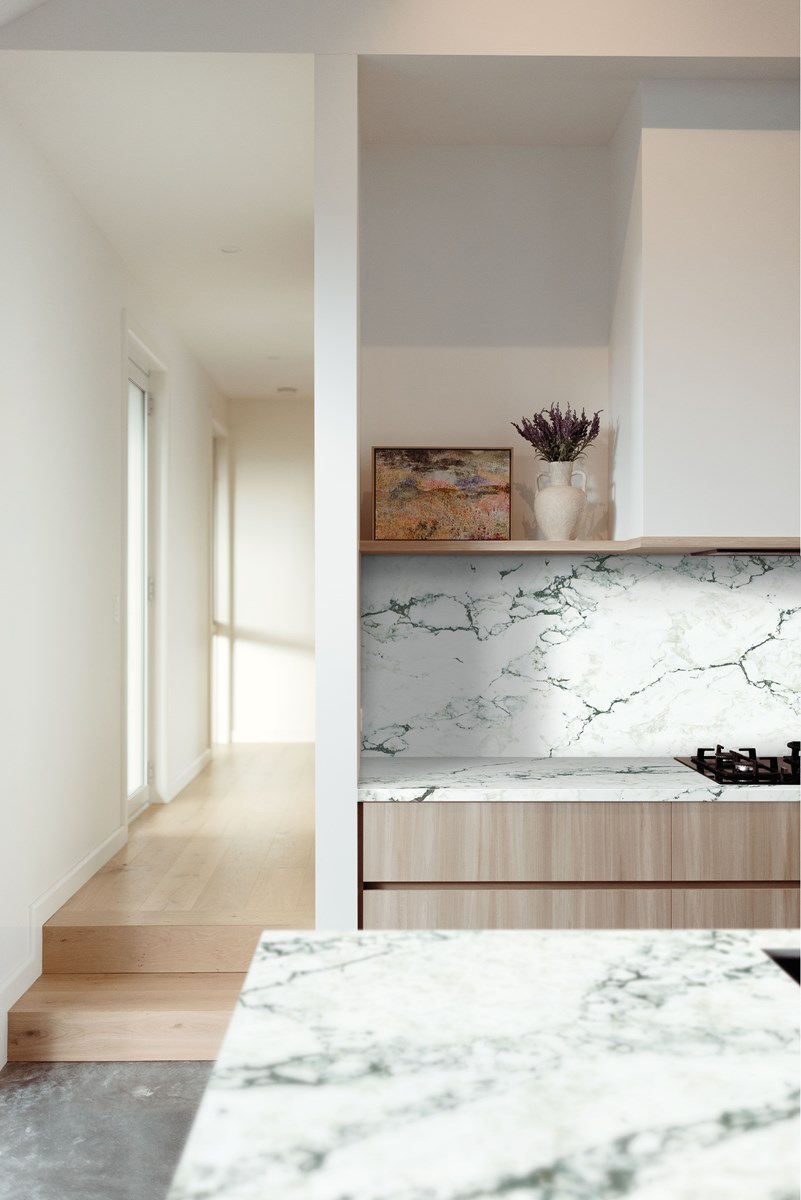
Quantum Quartz from Poletti Kitchens
There are a lot of manufacturers on the market now who offer a wide range of colours from pure white through to imitations of natural marble. Depending upon the look there are cost implications with some suppliers having a wide range of prices.
The engineered stone market has also responded to the health concerns associated with the installation of reconstituted stone. Crystalline silica present in these benchtops posed a significant risk to manufacturers and installers when the dust is released into the air. Most companies now have released a new silica free product and the majority of their popular designs are now available in this product.
New to the market is sintered stone from Smartsone. Unlike engineered stone, Smartstone sintered stone surface is 100% natural material which contains no metal compounds or resins as binders. The appeal with this product is that the veining goes through the stone making it perfect to use for rounded edges.
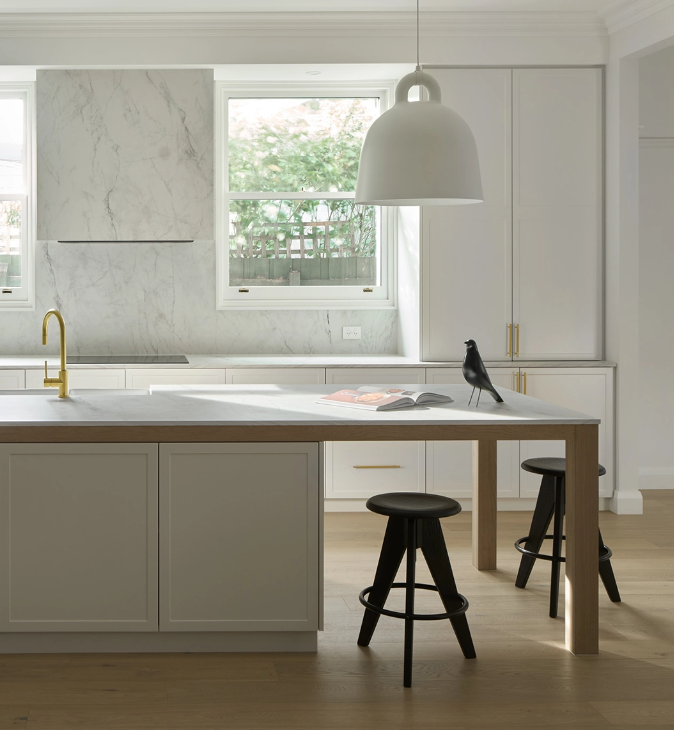
Different options for engineered stone
A simple black or white engineered stone with a slight fleck is a timeless look that is also very durable. My clients love the pure whites and blacks, but remember that if you have a slight fleck throughout, the benchtop is a lot more forgiving. So if over time you have the odd chip or stubborn mark it is less obvious.

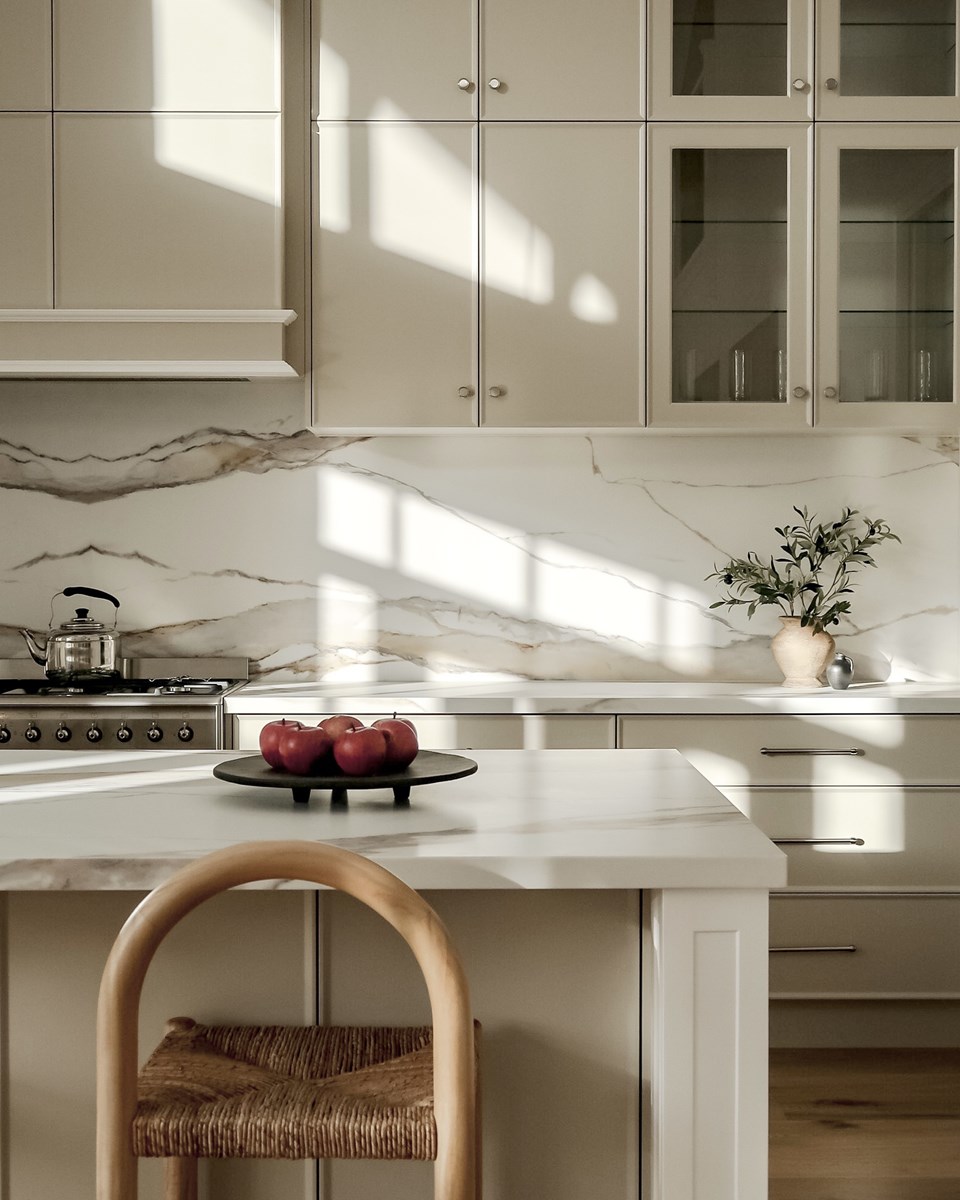
Check the undertone in your stone
Always check the undertone in your chosen stone. Some will be a fresher white, while others will be more creamy. You can really understand the different undertones by placing larger samples next to each other.
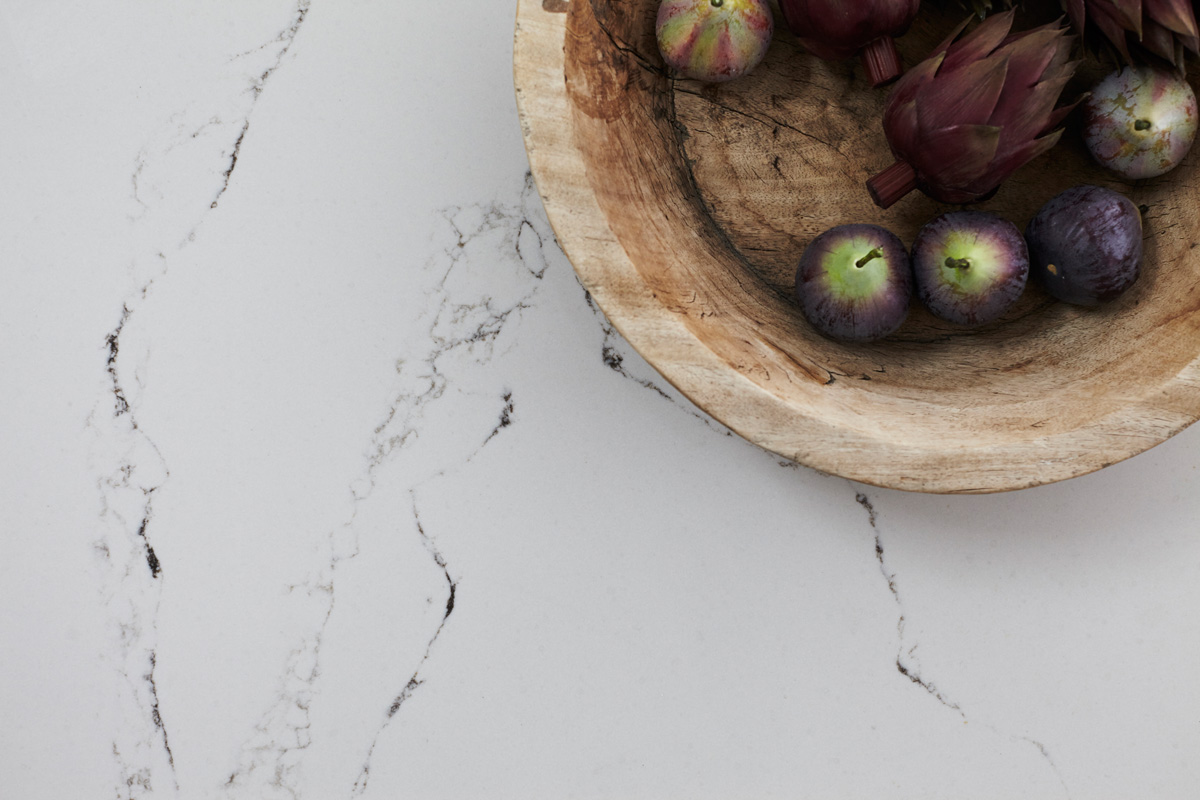
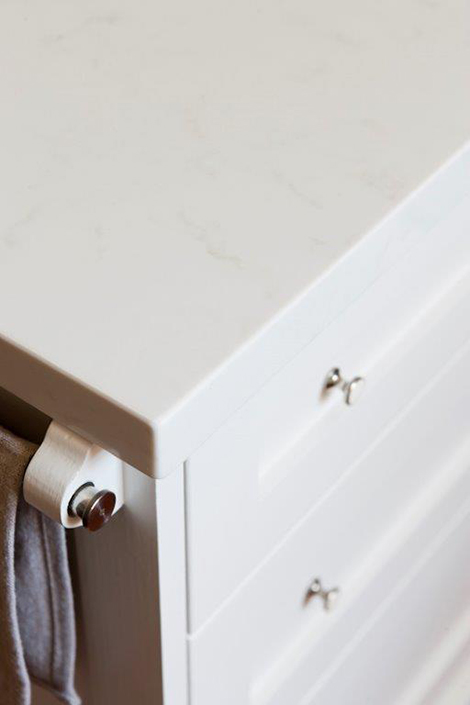
Porcelain benchtops
Porcelain is relatively new to the market and is gaining ground in popularity as people appreciate its visual appeal and understand the benefits to using this product. These benchtops don't stain, and are extremely hard wearing. Not all porcelain benchtops are equal though and do vary in quality. Some kitchen designers are wary of using the product, while others are embracing its design possibilities.
Dekton benchtops from Cosentino are well regarded in the market and this is my go-to product for outdoor kitchens as they are very stain resistant which you need with leaf litter and anything else that mother nature will throw at it.
The appeal for a designer is that the slabs come in different thicknesses and therefore this is a great product to use for a splashback as you can use a slab that is only 4mm thick. If you want a benchtop and splashback to match, then this is a great solution.
Substantial thick benchtops have been very popular, but depending upon the style of your kitchen, you may prefer a slimline 12mm version which gives a very European look.
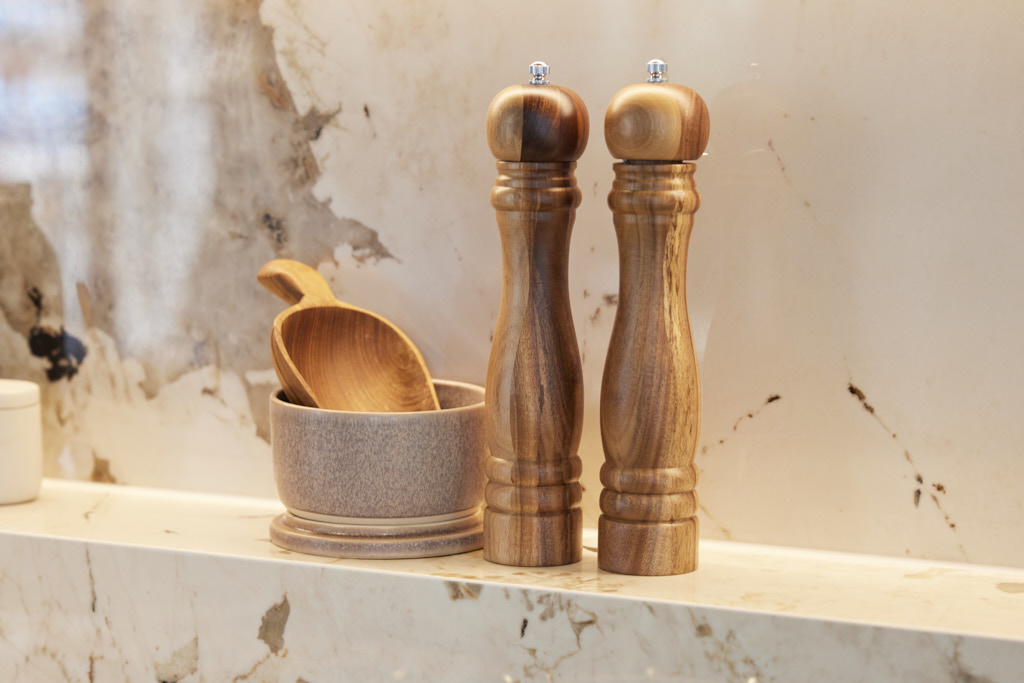
Dekton stone used on The Block
With porcelain you can easily make a splashback with a shelf to match your benchtop.

Porcelain has been used for this island bench with a very thin profile. The design appeal is that you can then also use it for joinery and side and front panels for your island. In this case, these corner cabinets swivel to reveal storage inside.

Caesarstone porcelain in Silvax is a soft travertine that is contemporary and warm. The thin profile works perfectly for this oval shaped island bench. The stone has also been used on the facing of the cabinets, the benchtop and splashback which offers a seamless look. The design possibilities and the luxurious finish really are the appeal of porcelain.
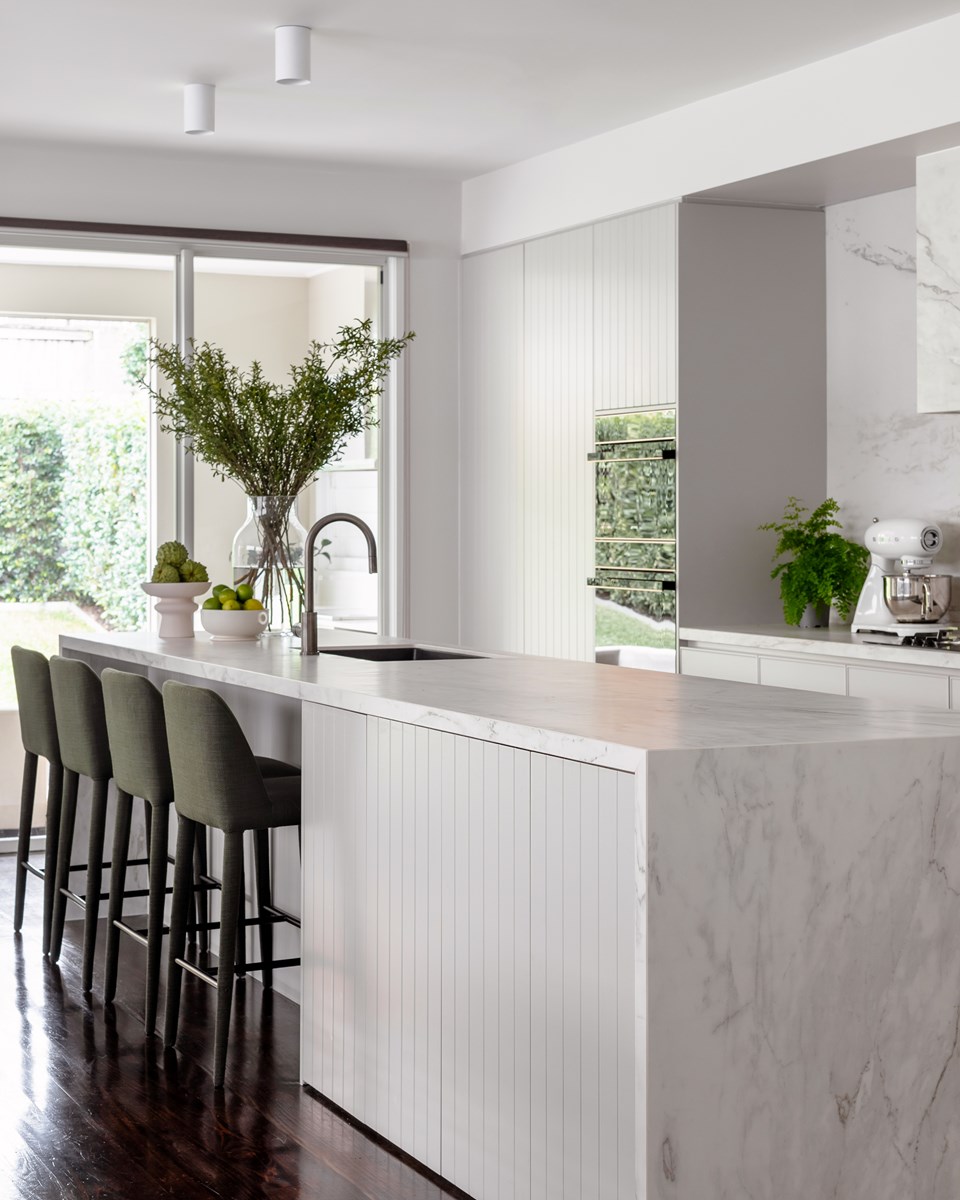
Quantum Quartz kitchen by Liberty Interiors
This gorgeous kitchen above showcases Quantum Quartz's Bianco Six+ porcelain.
Concrete benchtops
With concrete benchtops you have the benefit of strength and a very solid work surface which will withstand the rigours of heavy use. Concrete is also very customisable, so can be poured to any shape or depth.
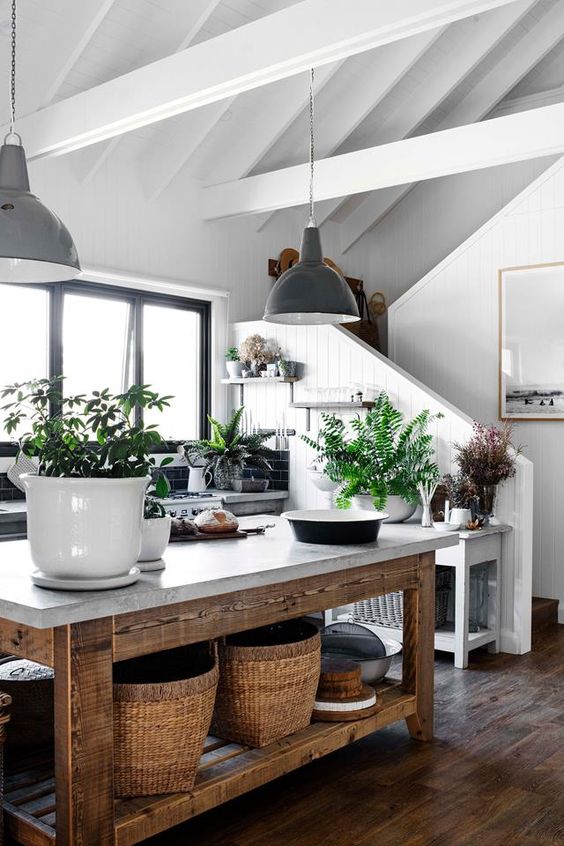

Concrete benches do need to be sealed as they will stain and as with most benchtops, you will need to use heat resistant pads. Although this is a highly durable surface, it is likely that you may have some hairline cracks, so this is something you will need to make peace with before you commit.
If you do want a slightly industrial look, this could be the product for you. I particularly like them when they are partnered with other materials. So perhaps use concrete for an island bench with a reconstituted stone or laminate for the other surfaces, or use concrete for your working surfaces and partner with a timber island.
Laminate kitchen benchtops
Laminate bench tops have played second fiddle to stone and are seen as the poor relation, but a good quality simple laminate can be a great solution. I like the plain colours or ones with just a hint of a design.
They just provide a very effective, long lasting and durable benchtop that will look good for years.
Laminate benchtops don’t break the bank and leave you more funds to furnish your kitchen with beautiful artworks, rugs and furniture that bring great personality to a space. So don’t feel pressured to select a stone if it is financially out of reach as this is not something that you absolutely need to have. Remember that less can be more and a kitchen doesn’t have to be flashy or expensive to be beautiful and practical.
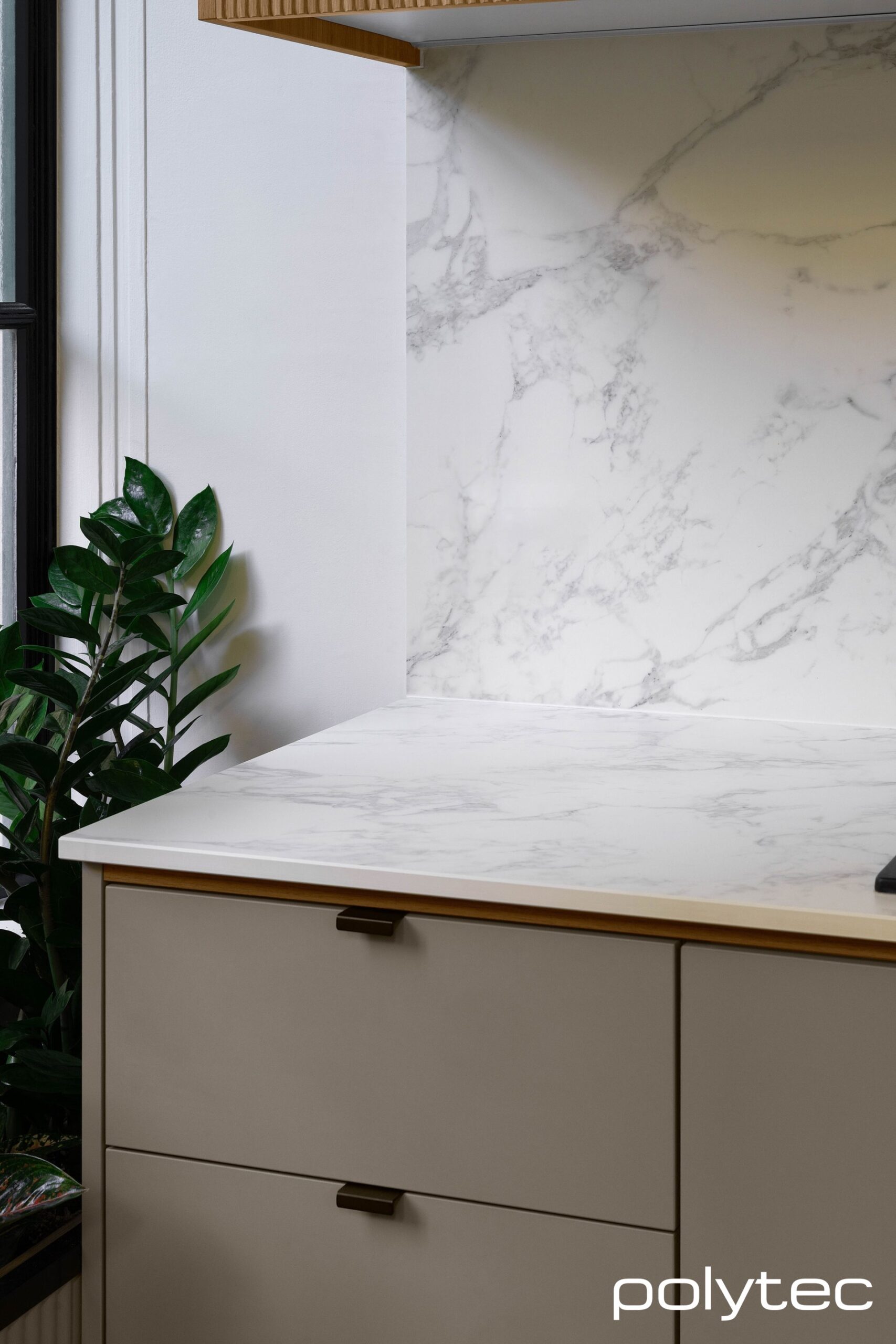
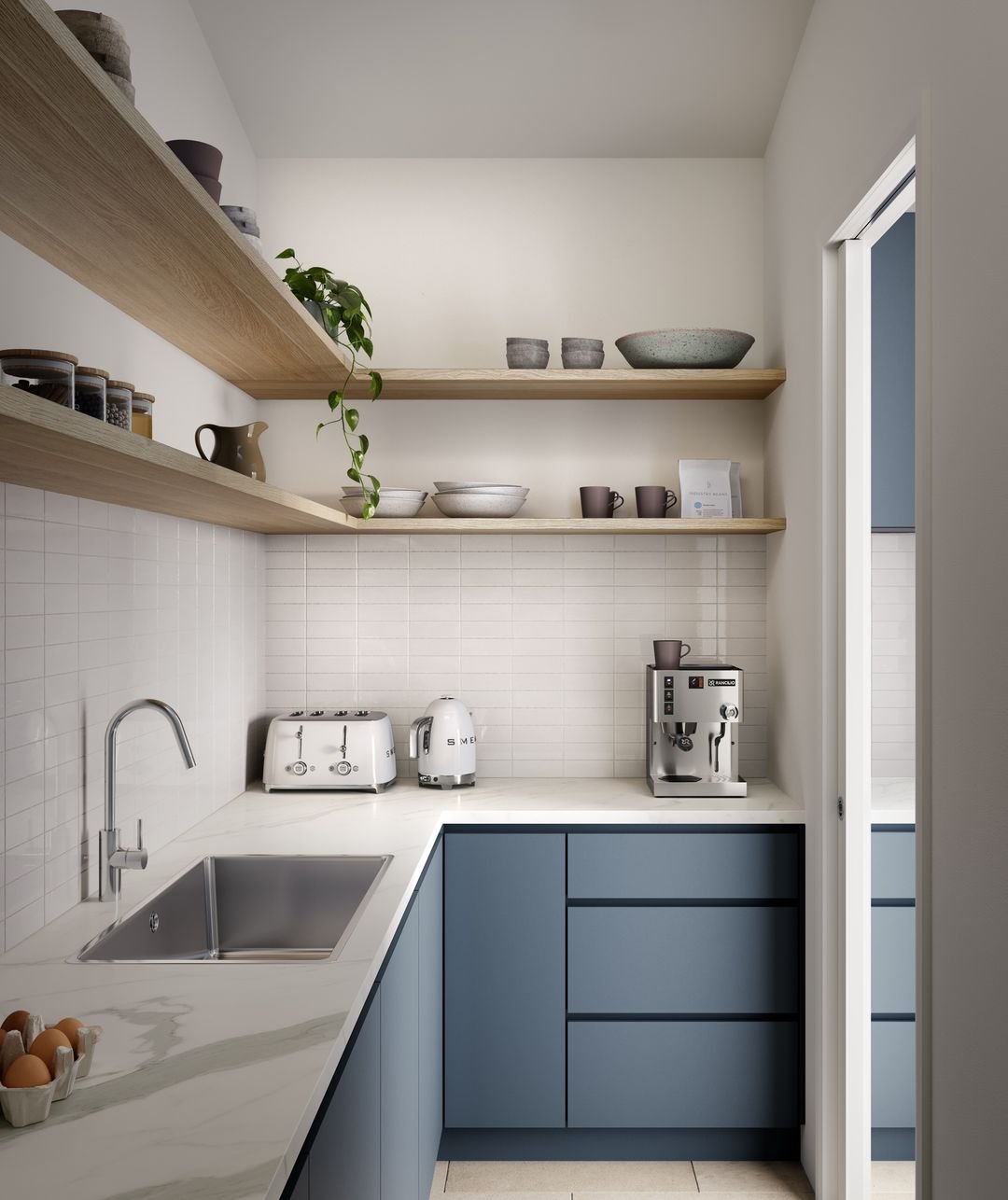
Timber kitchen benchtops
I am starting to see a lot more timber benchtops in kitchens which I love as it is such a beautiful warm and natural product. Of course, a timber benchtop will mark, but if you are careful and use chopping boards and heat resistant pads – as you should with any benchtop – then you will have years of use from this.
The beauty with natural timber is that it can be sanded and re-finished to update the kitchen when necessary.
You can of course just opt for timber on an island bench and use a more practical stone or laminate for the working areas. This is a great way to introduce a point of difference and makes the island more like a piece of furniture.
Remember when selecting the timber to use that there are varying levels of hardness, which can make an enormous difference to the durability of the piece, so ask this question before you commit.
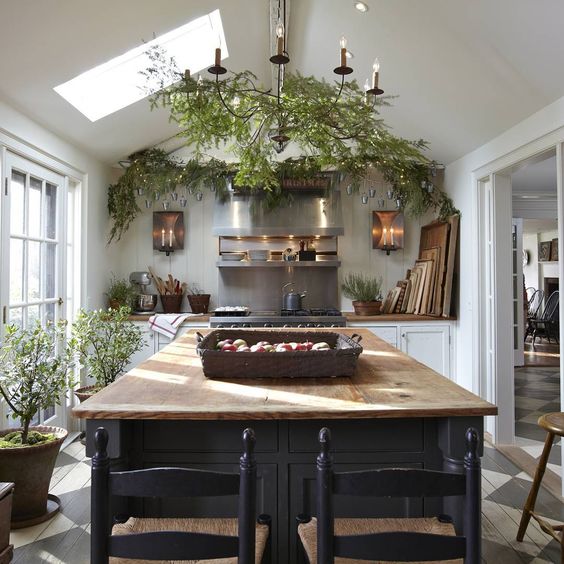
Stainless steel kitchen benchtops
Undoubtedly, this is the choice of the professional chef.
Stainless steel benchtops abound in commercial environments and for the true home cook, this can also be a great solution. Cool to the touch, durable and heat resistant, stainless steel is the obvious choice for anyone who loves to give their kitchen a good workout.
Depending upon the style of cabinetry, this choice of benchtop can look super contemporary or can fit into a cottage country style. Clearly a great choice for an upmarket New York style loft apartment and great for anyone who loves the industrial look. I particularly like stainless steel partnered with timber.
This way you have the durability and convenience of stainless steel for the working areas and the beauty and warmth of natural timber for the island and servery section of the kitchen.

Acrylic Kitchen benchtops
Corian is the best known amongst the makers of acrylic surfaces and I absolutely love to work with these. The beauty of Corian is that it is a seamless product. Joins are invisible and therefore if you have an extra-long or wide stretch of bench top you can have a finish that is completely seamless.
Corian is also very malleable which is why it is such a great commercial product and an excellent choice for healthcare and education environments. For the humble kitchen it offers a lot more than many other types of benchtop. As it is so malleable and seamless you can have your kitchen sink made from the same product as your benchtop which means there are no nooks or crannies for bacteria to hide in and you can also extend your benchtop to work as a splashback. Be careful though as you do see the join at this point unless you use a pure white.
The downsides are that it is not as heat resistant as stone, however as I have mentioned, I wouldn’t put anything hot down directly onto any surface. Corian does also scratch more easily but the beauty with it is that any marks, stains, cigarette burns or scratches can be easily repaired. I know people who have had this style of benchtop for years and with a little care and renovation keep it looking good.
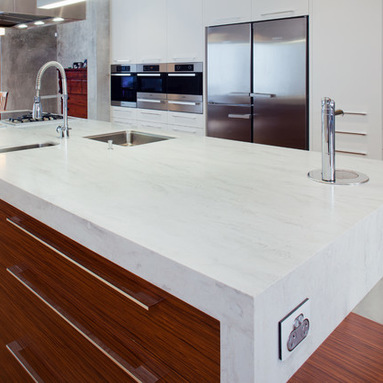
A matt or a polished kitchen benchtop?
There is something about a matt black bench top that I find really appealing. Using a strong colour on the bench top, particularly if you partner it with white cabinetry, can be quite confronting but I feel that when you have a honed matt finish with black, the look is softer and although provides a great tonal contrast is not as obvious as a highly polished finish would give you.
I have found though that the matt finishes from some of the reconstituted stone manufacturers mark very easily and although it looks great to begin with, they can be tricky to maintain.
As mentioned before, honed natural stone surfaces can be less porous so this can also be a practical solution. It really boils down to the look that you like and the overall mood and style that you want to create for your home.
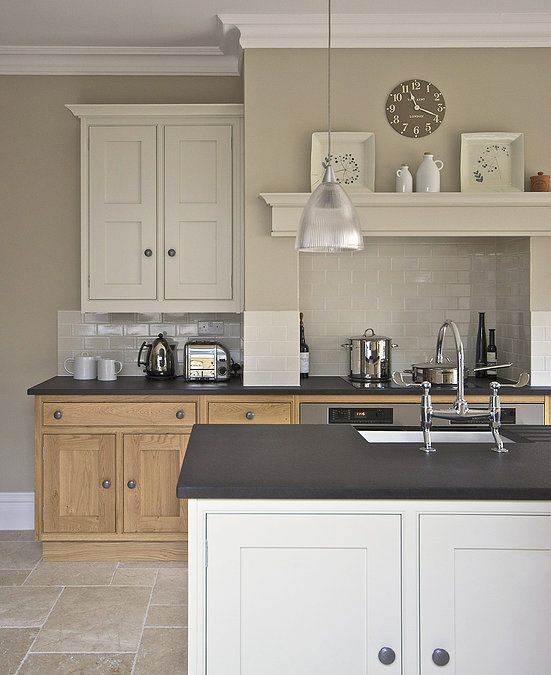
Selecting colours for a kitchen benchtop
I have touched on colour but what I really wanted to say is that a benchtop can either provide a strong statement and tonal variation to the cabinetry or you can select one that is the same colour.
White on white is very popular and gives you a timeless, classic look that will be popular for years. However if you want a point of difference, the benchtop colour is a great way to introduce this and varying degrees of tonal variation can give the kitchen a nice lift. You do need to consider this as part of the entire look, so do take into account your splashback ideas too.
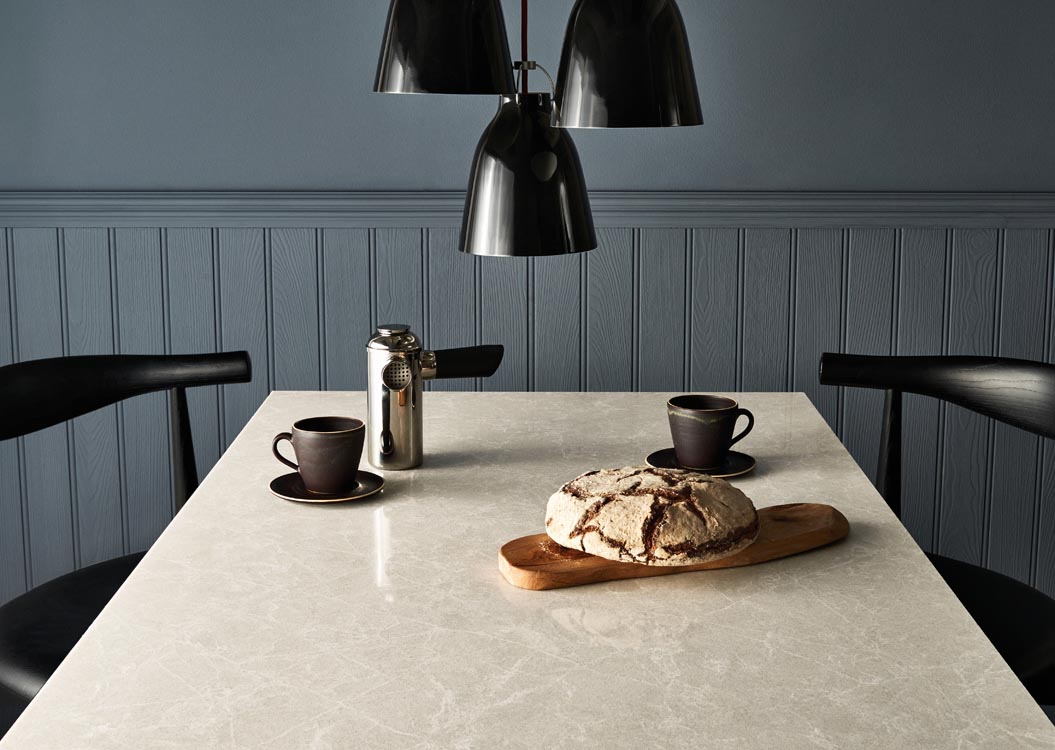
I would love to hear about your kitchen dilemmas and benchtop choices and it would be great if you followed me on Pinterest where I have a lot more kitchen inspiration. Hope to hear from you in the comments section below.
Related: How to choose the right kitchen splashback
This blog post was originally written in 2016 and has been updated to reflect current trends and products.
Stay connected with news and updates!
Join our mailing list to receive the latest news and updates from our team.
Don't worry, your information will not be shared.
We hate SPAM. We will never sell your information, for any reason.
